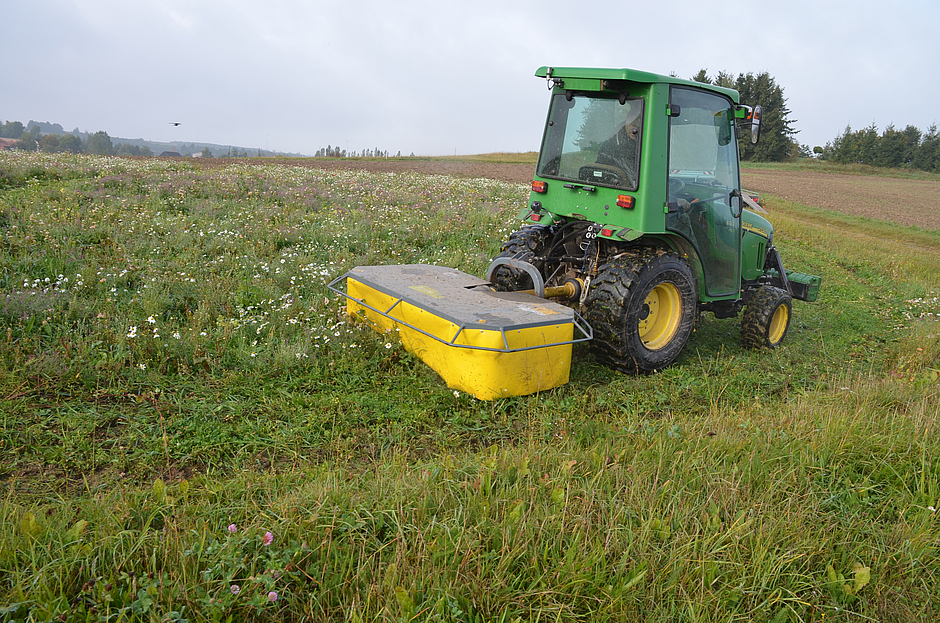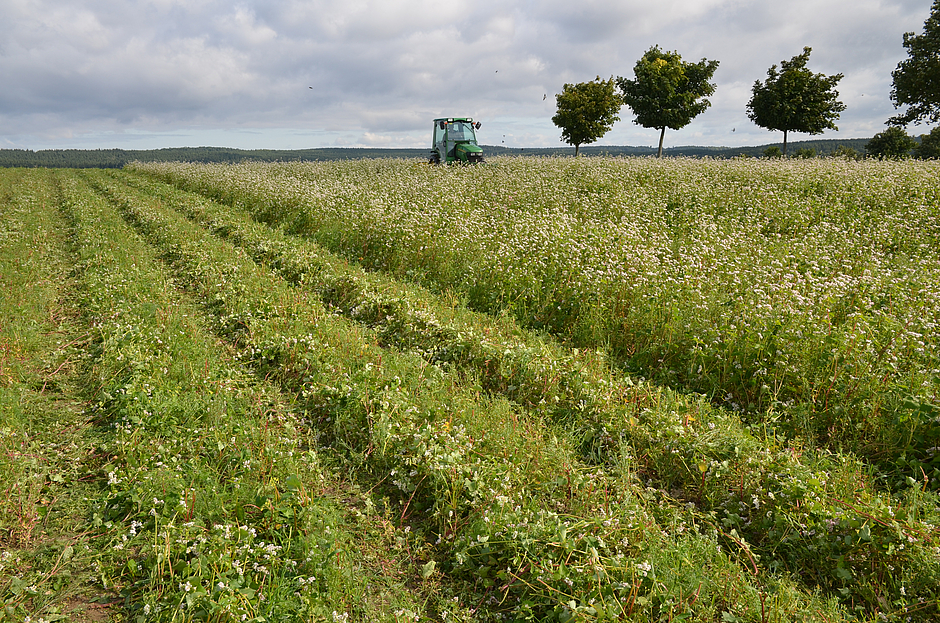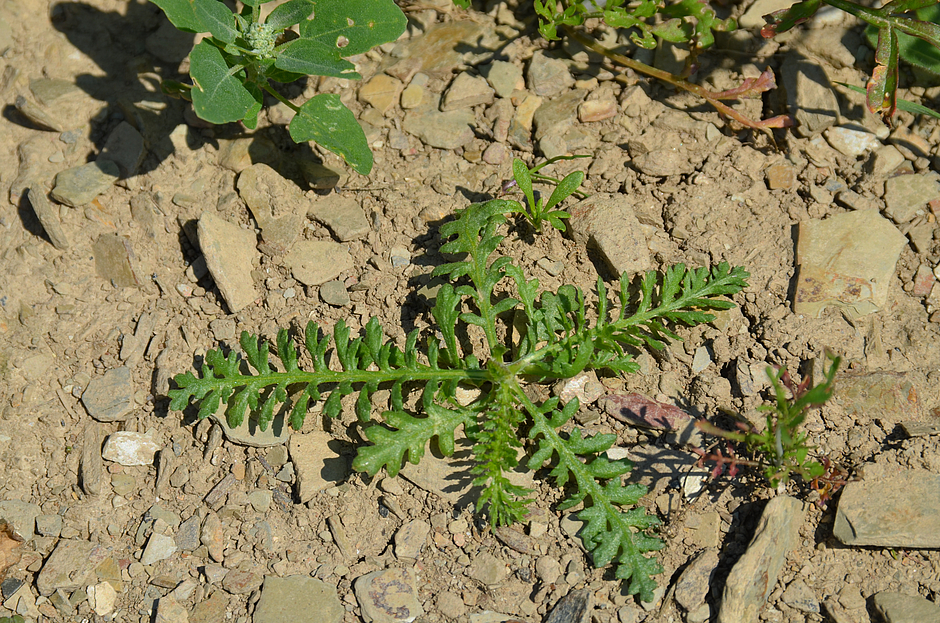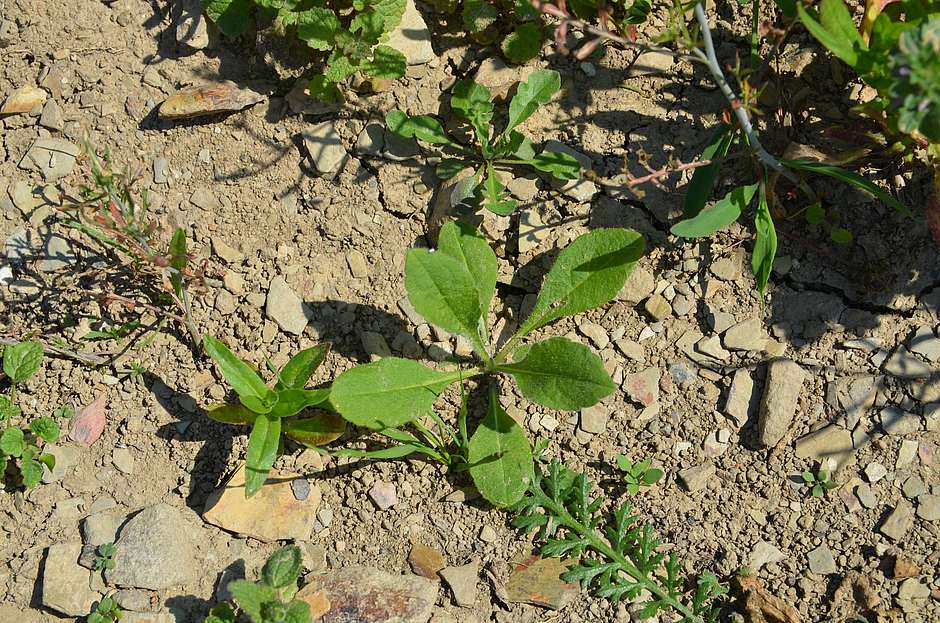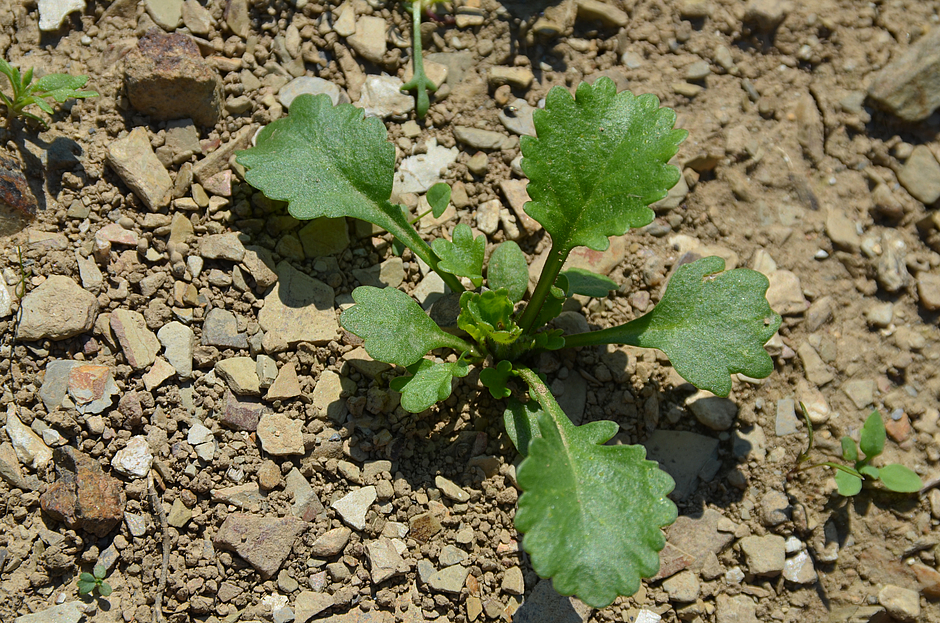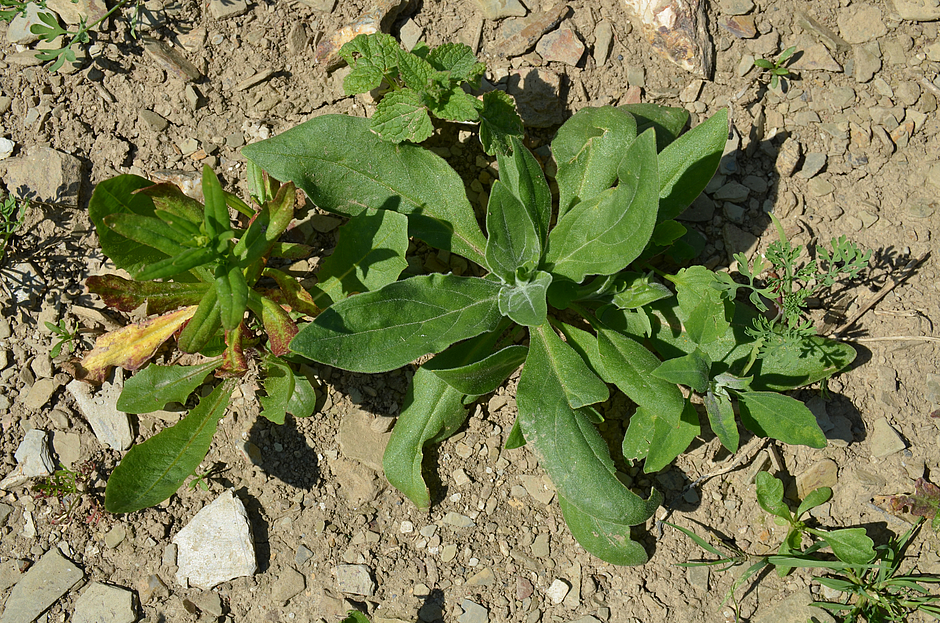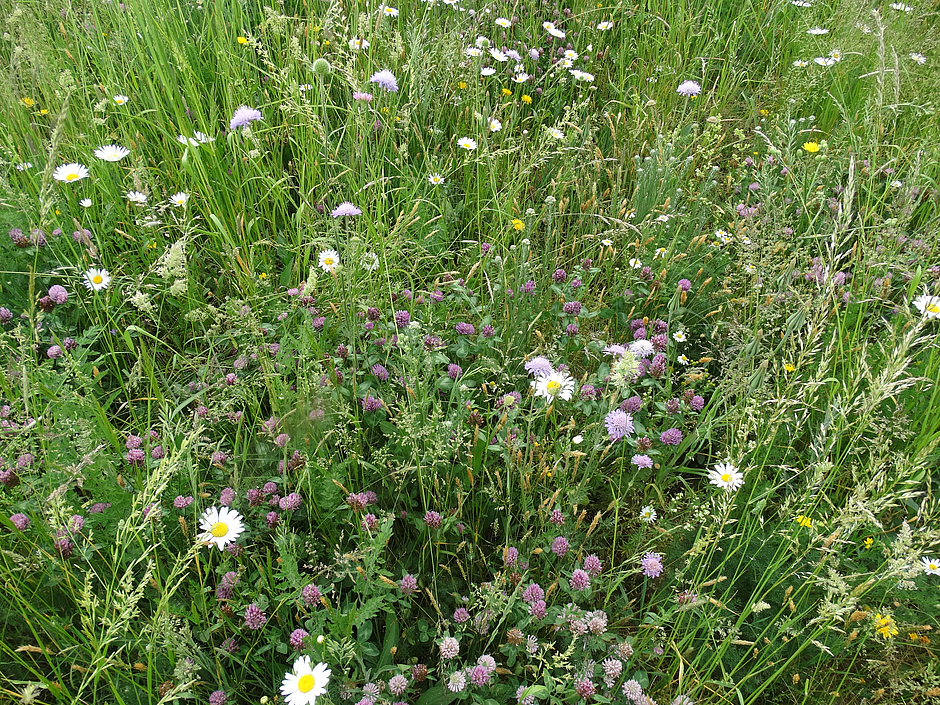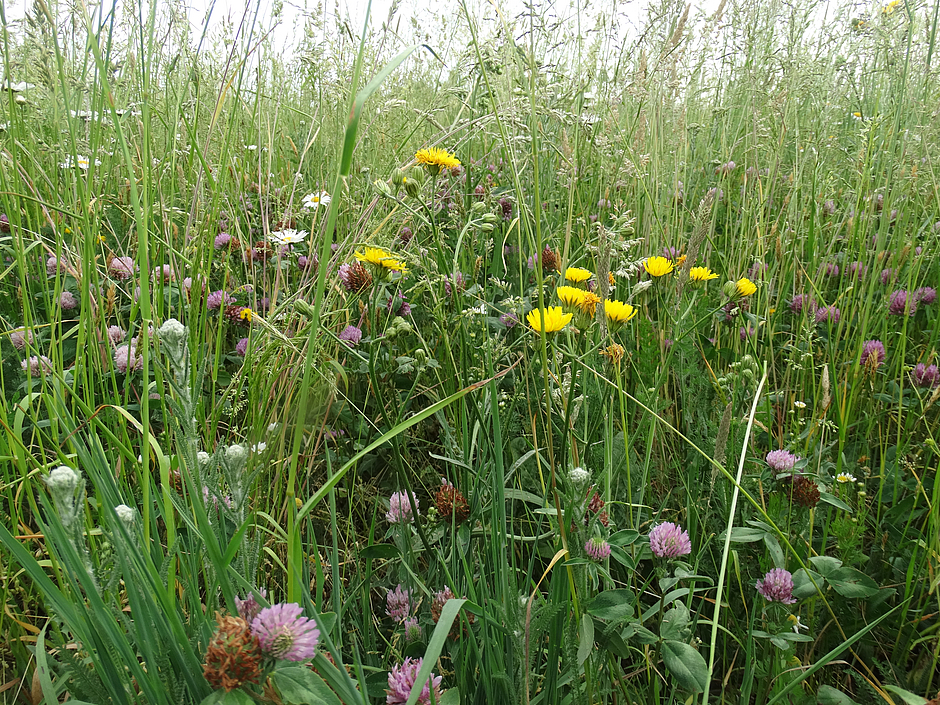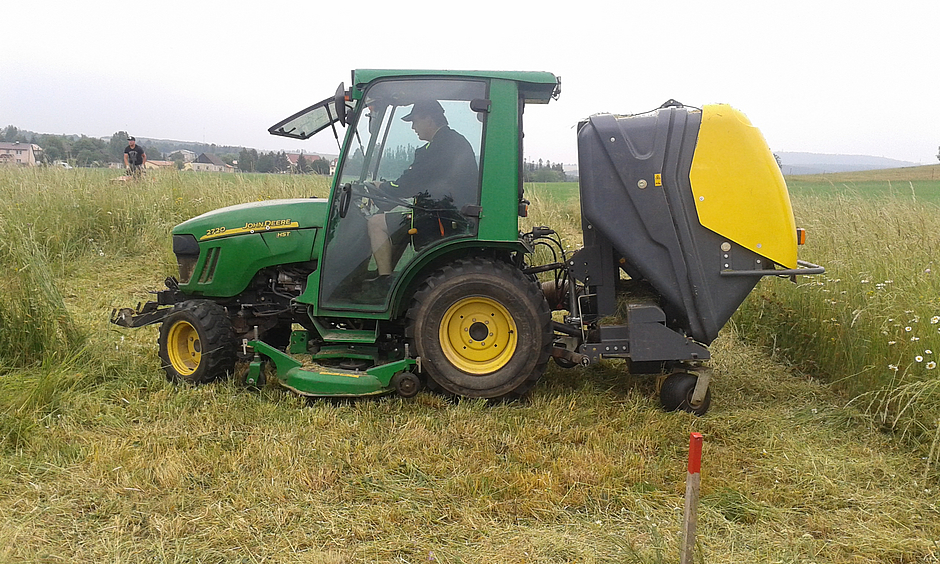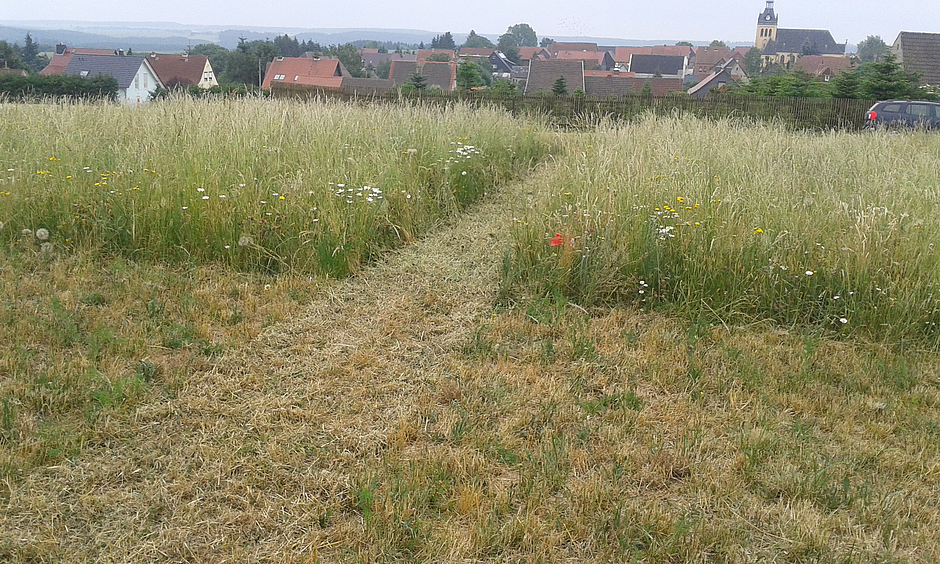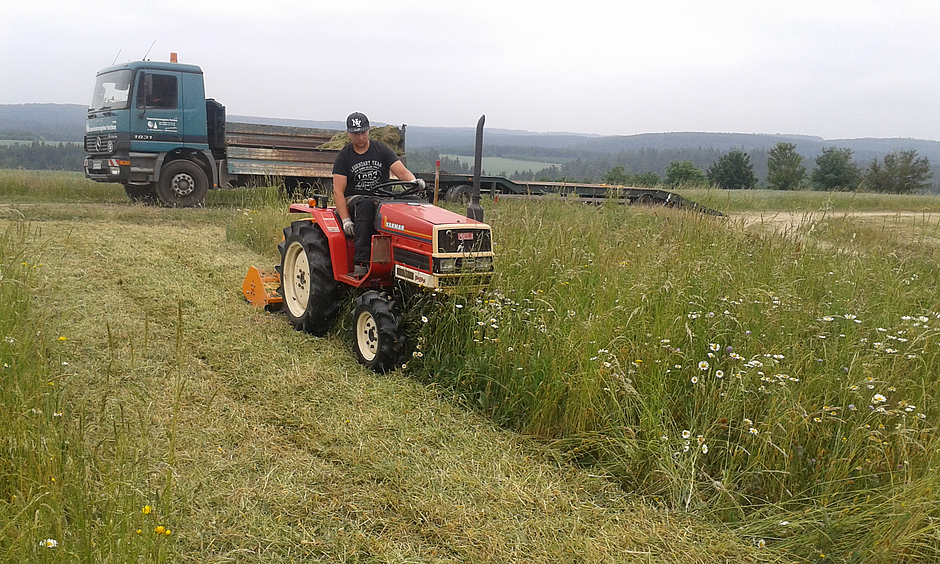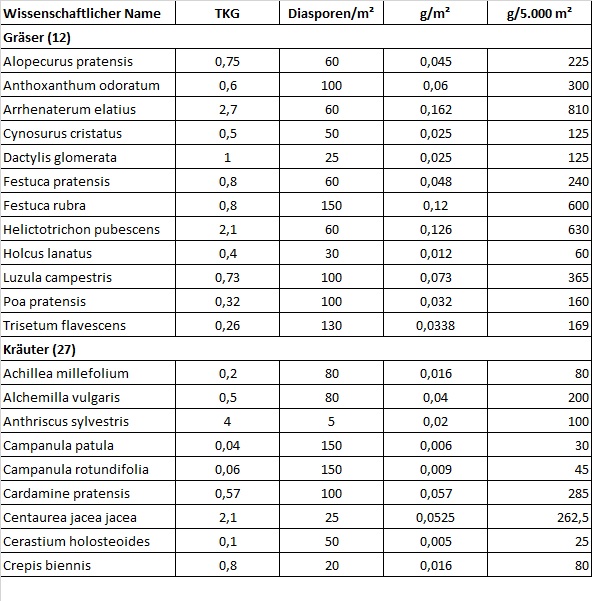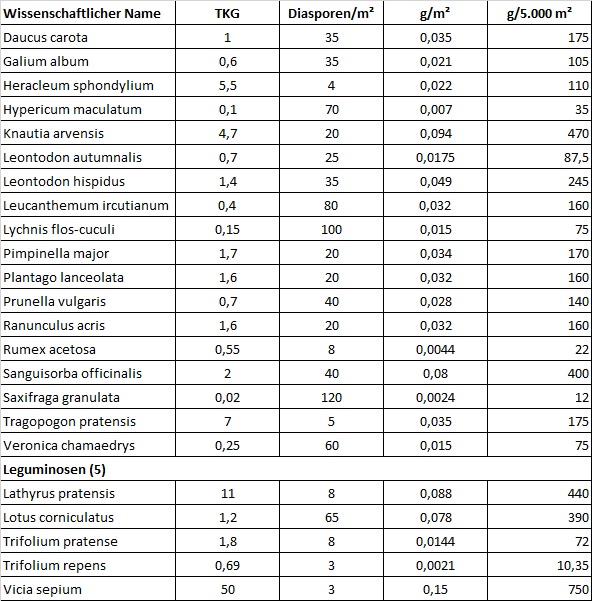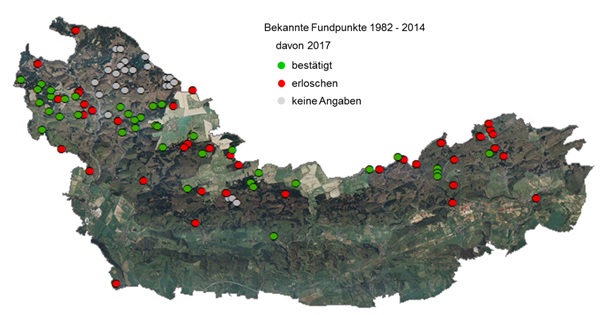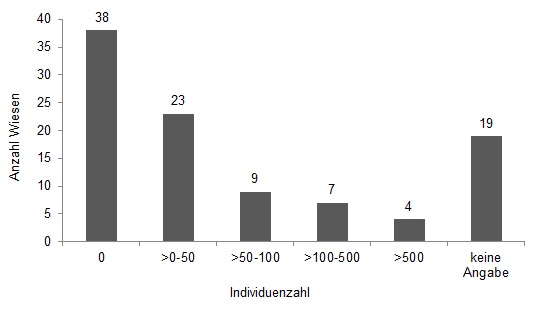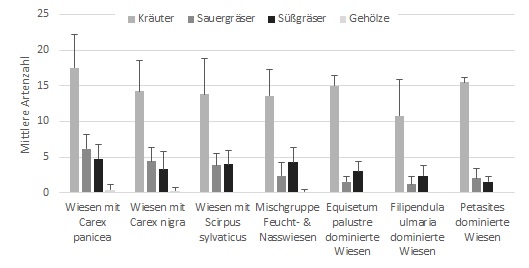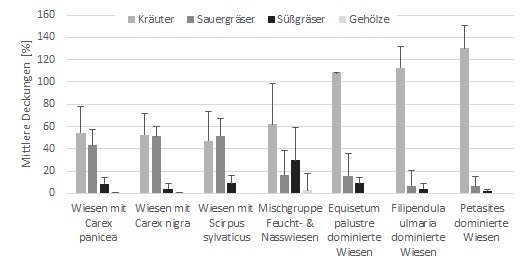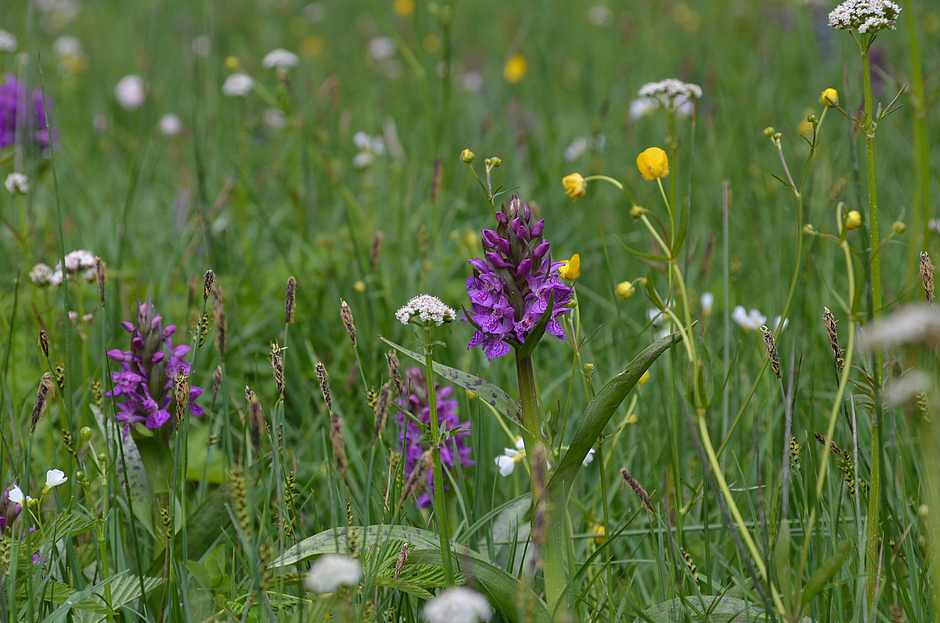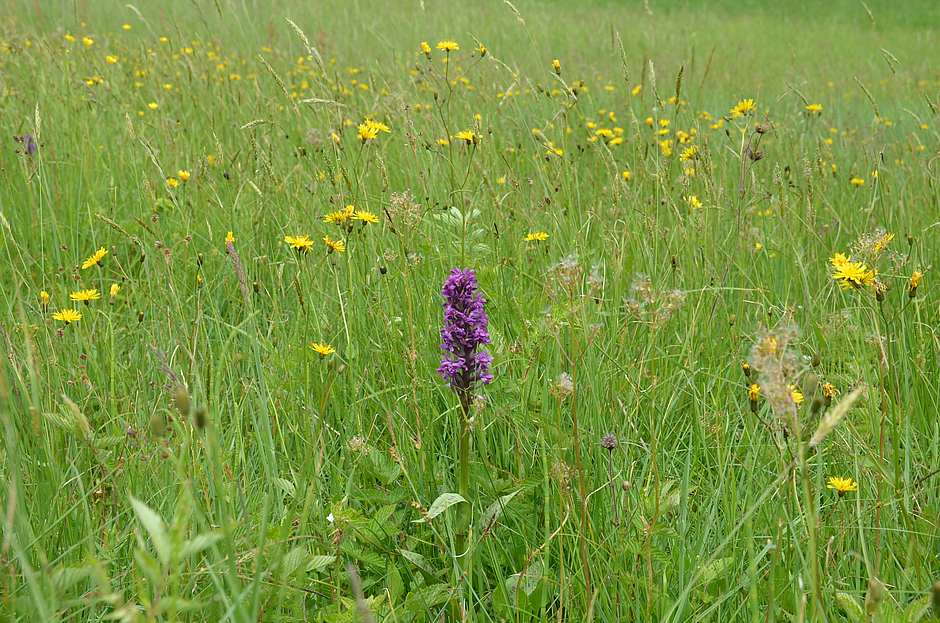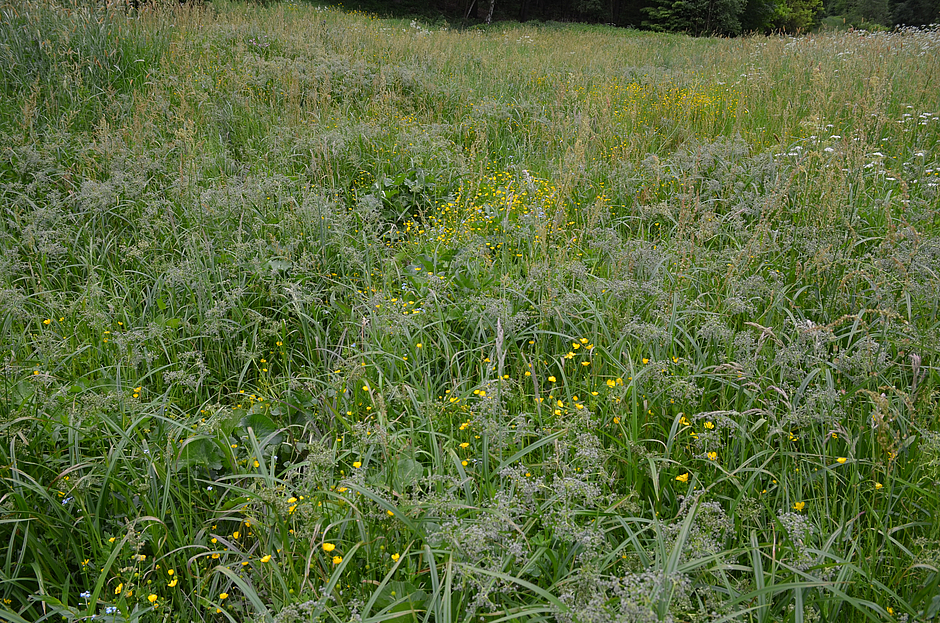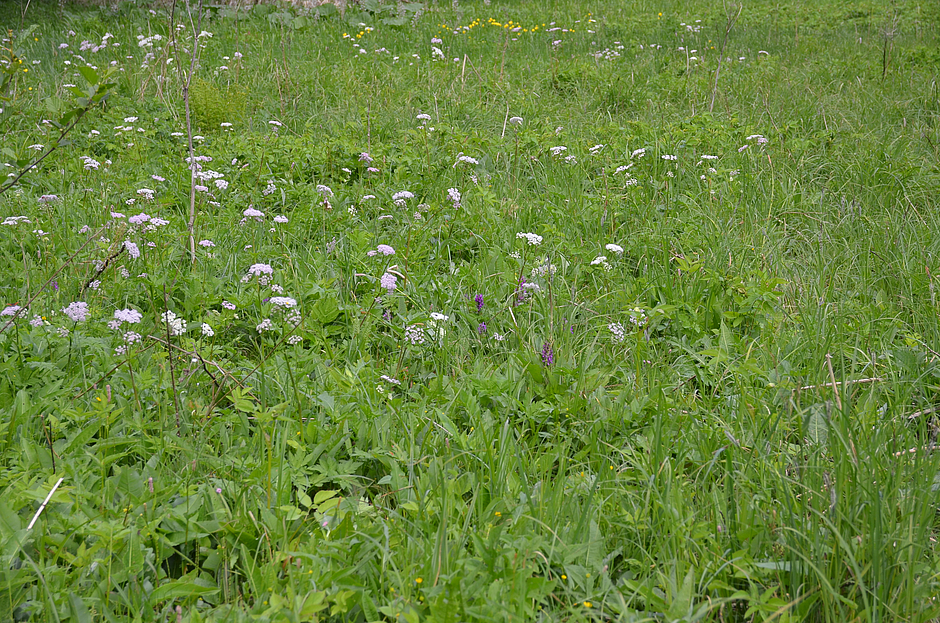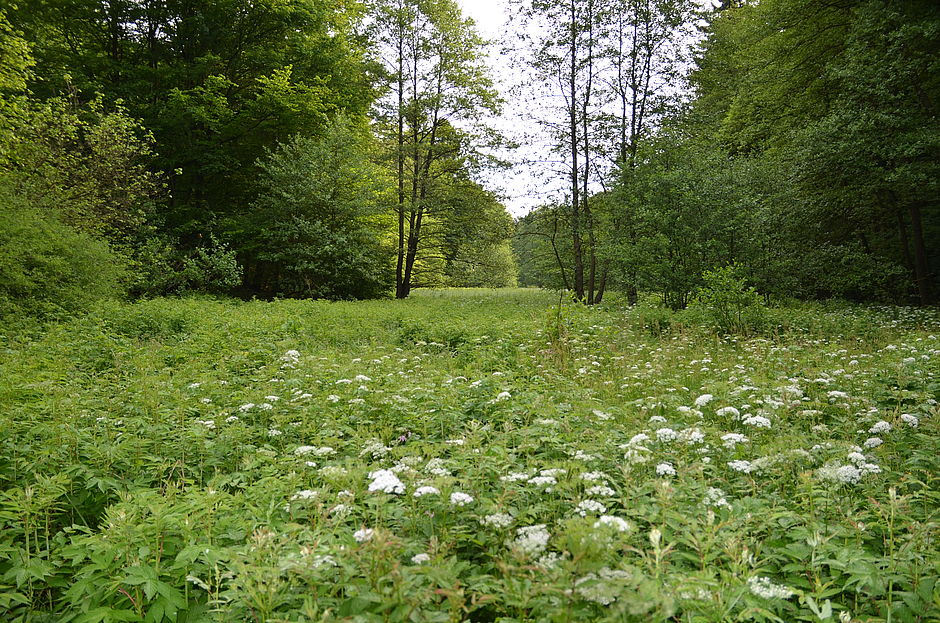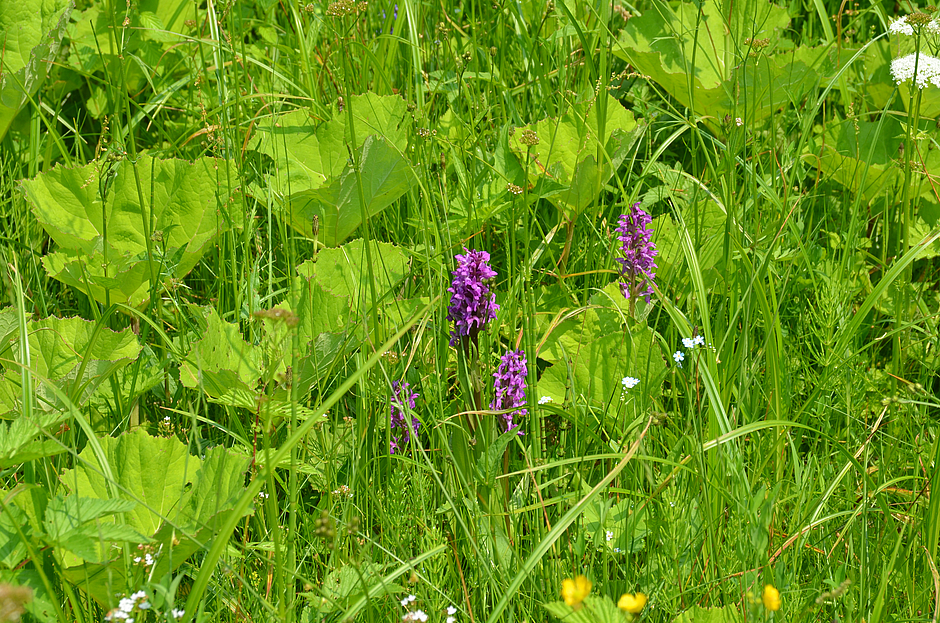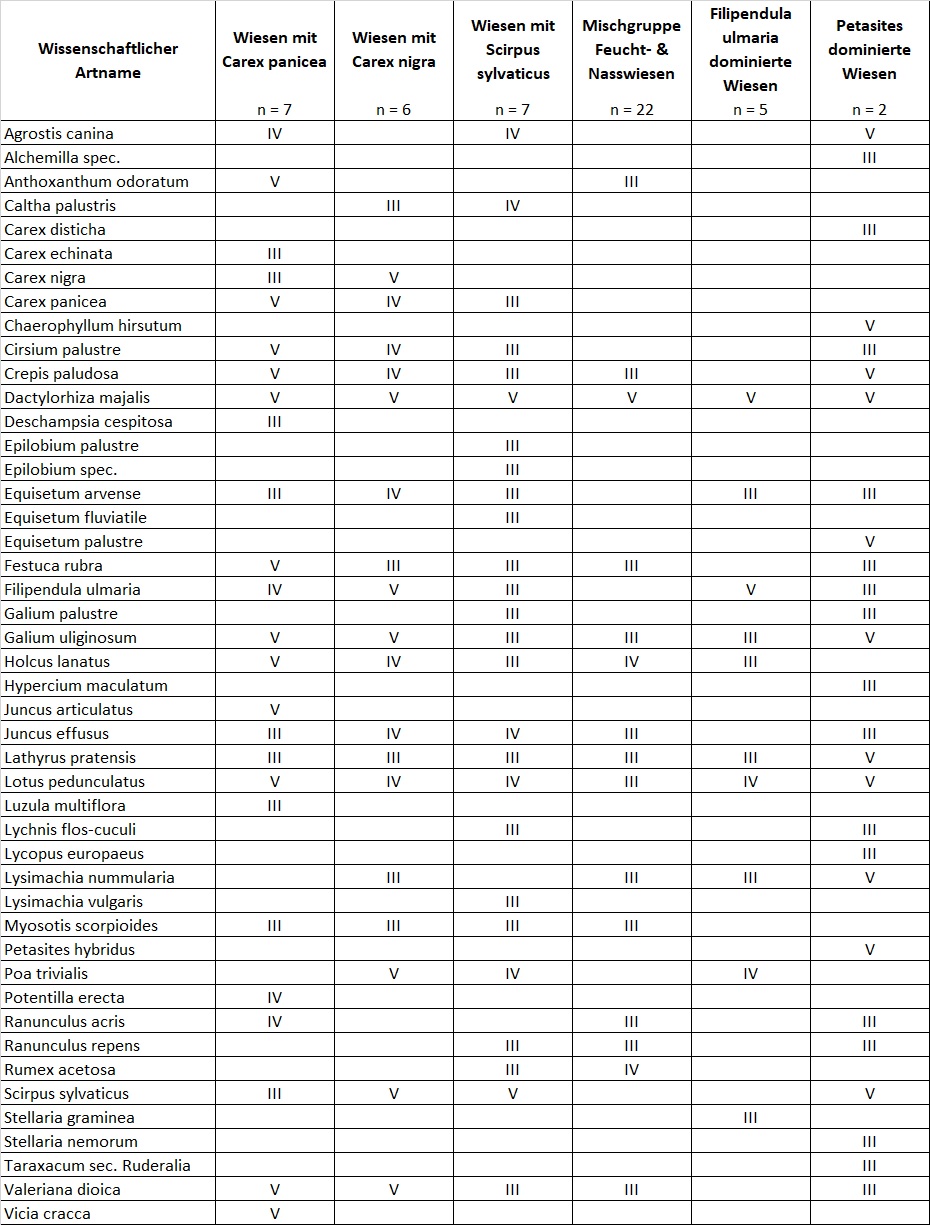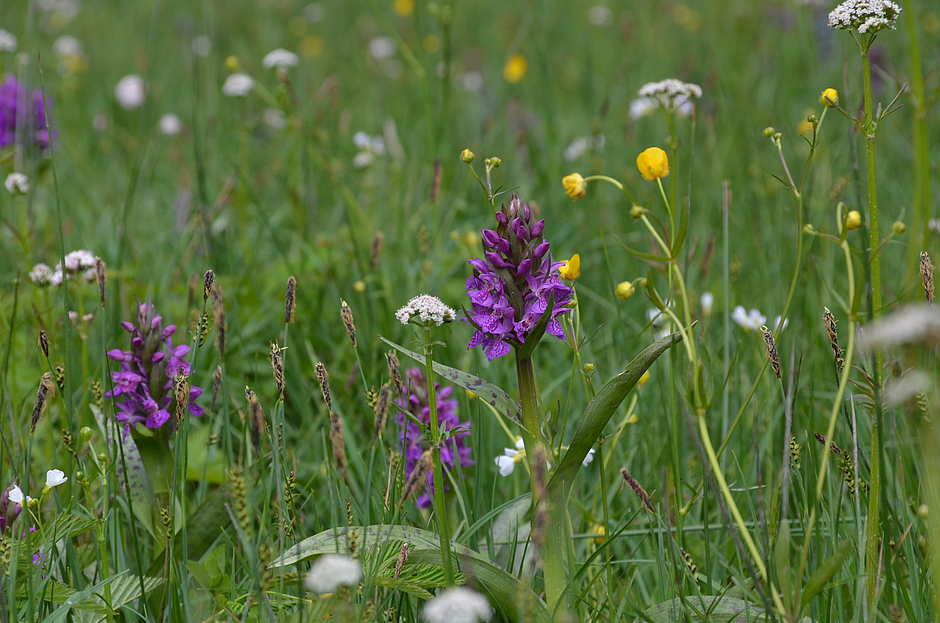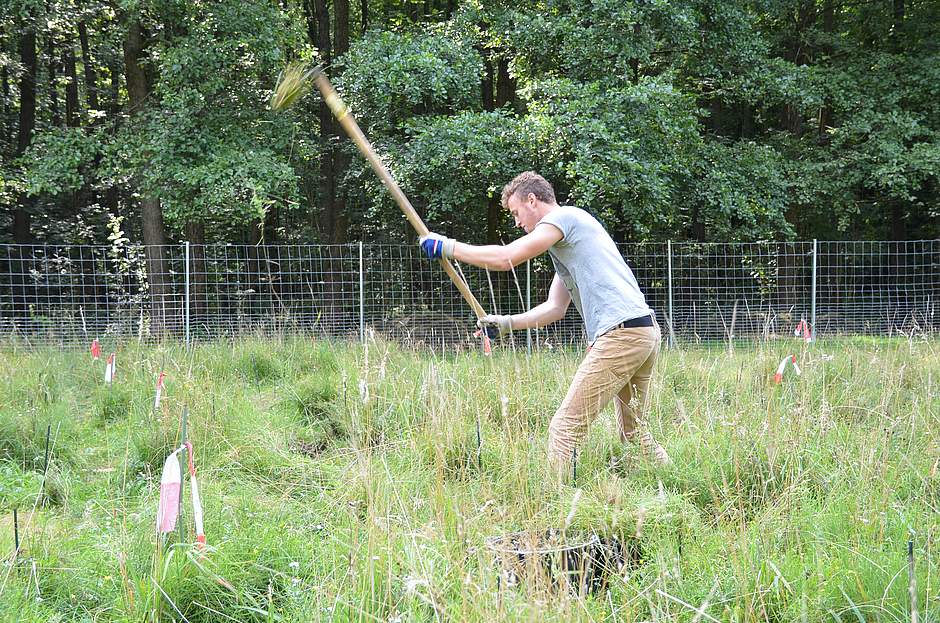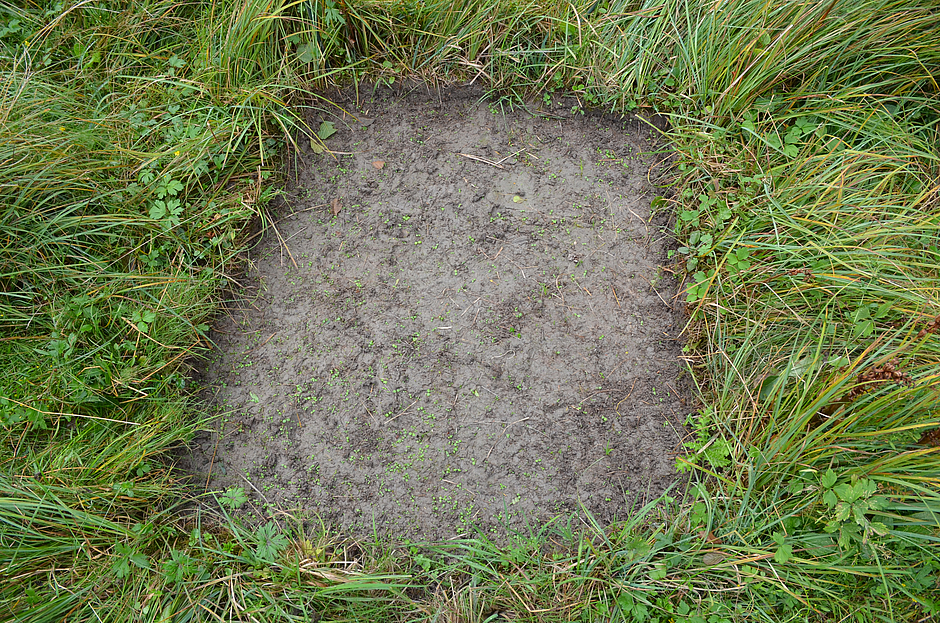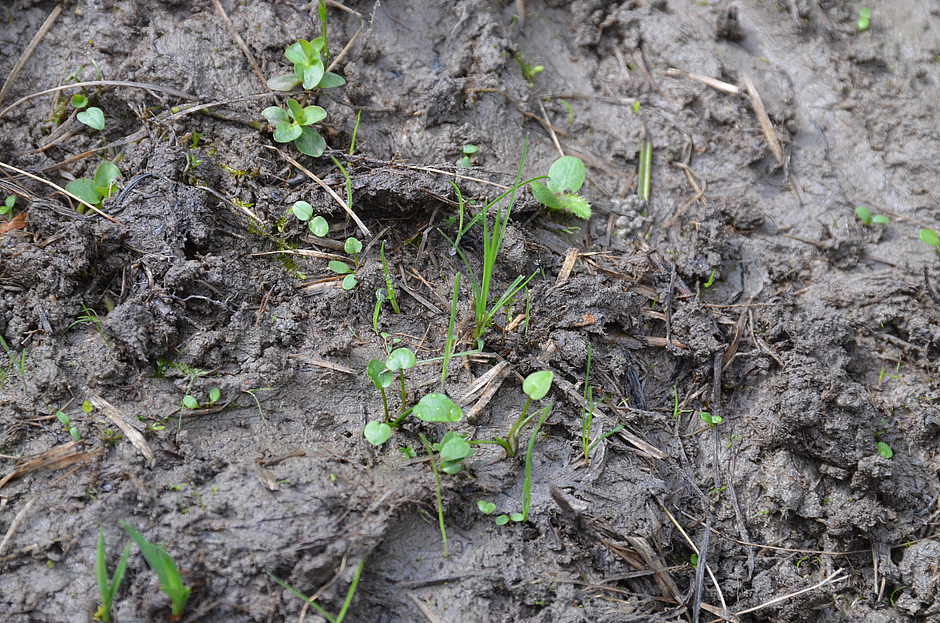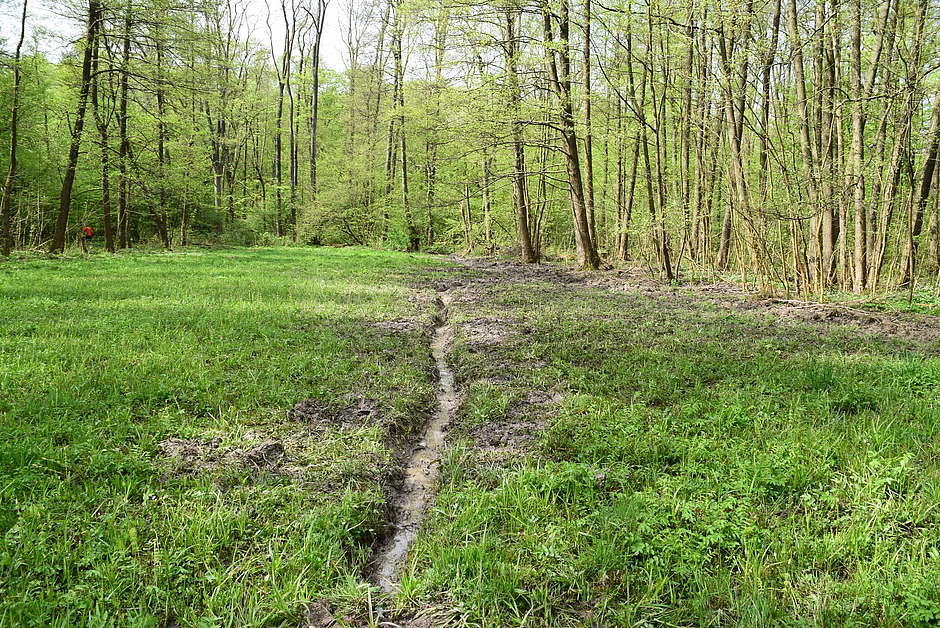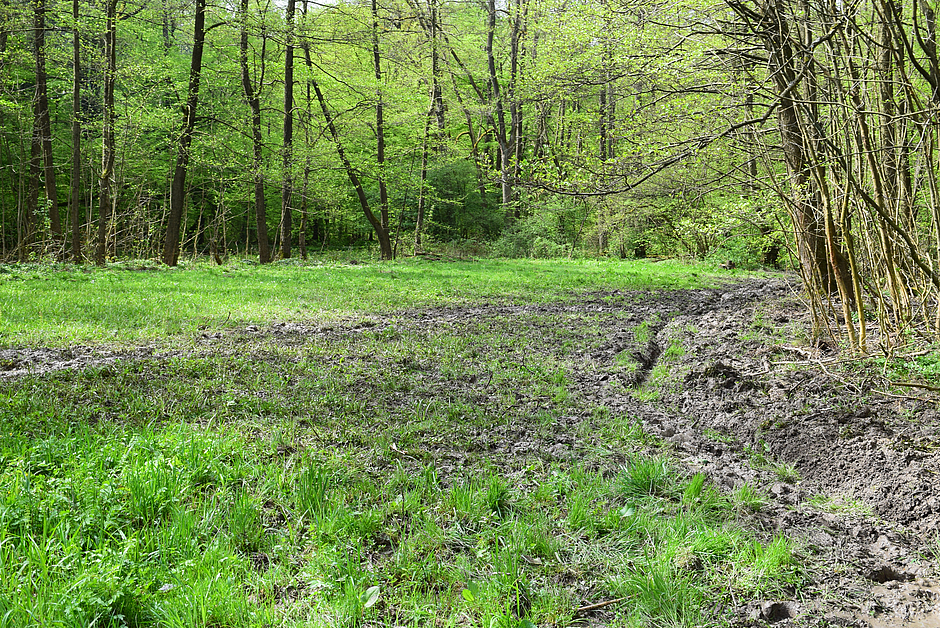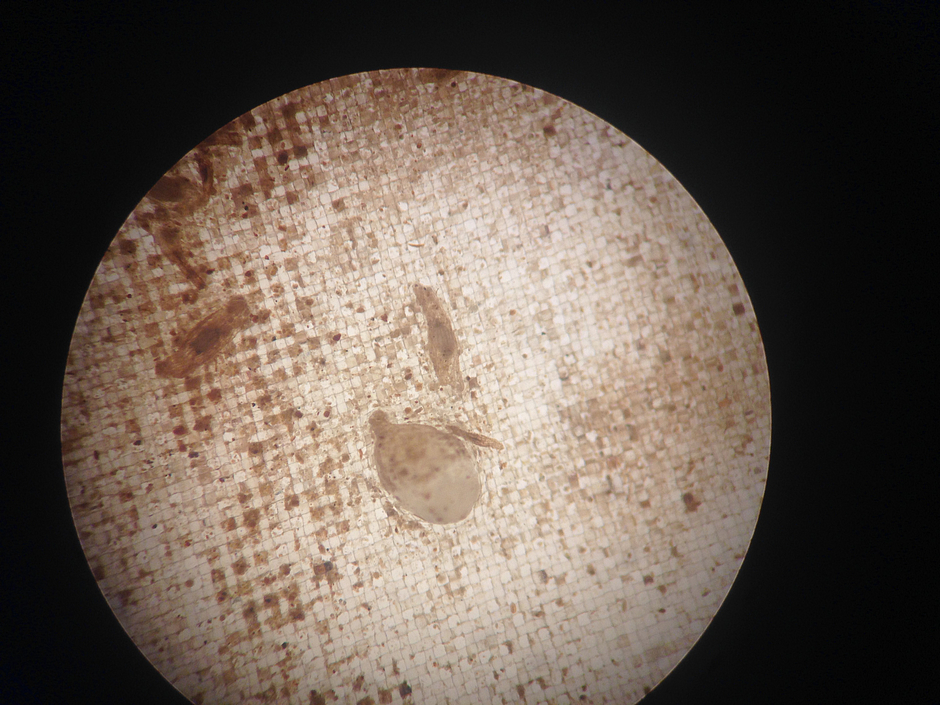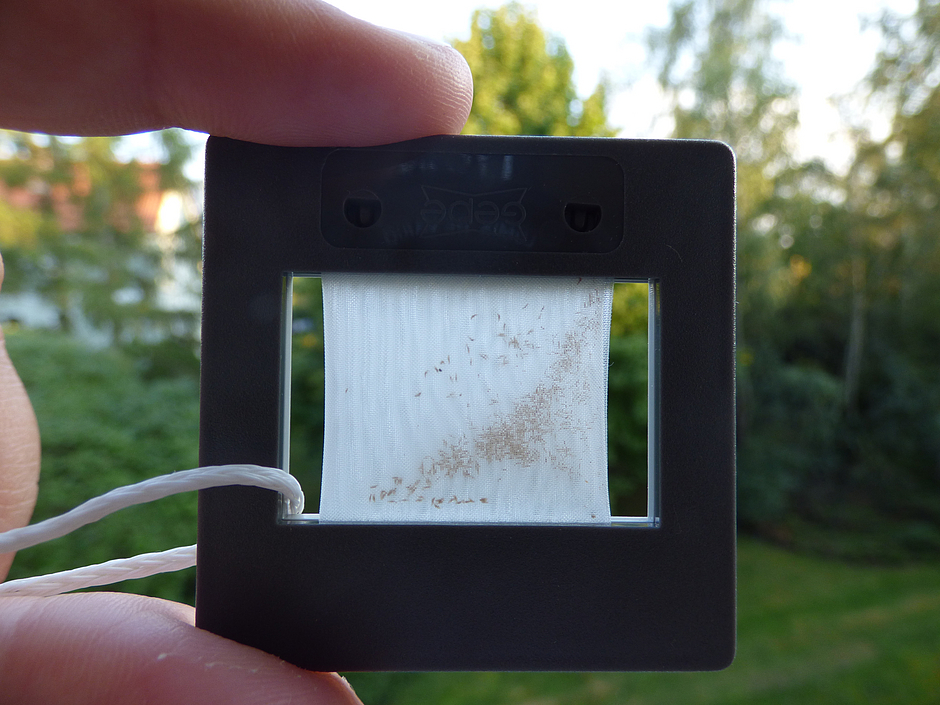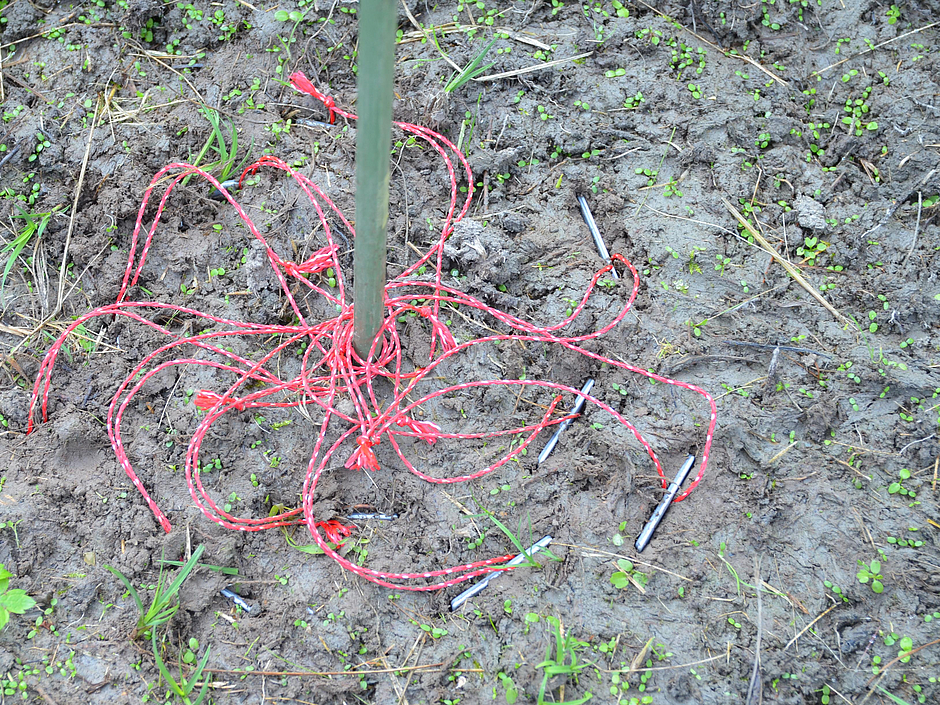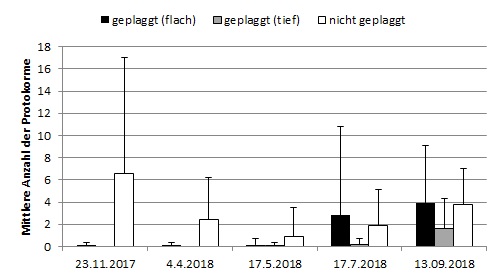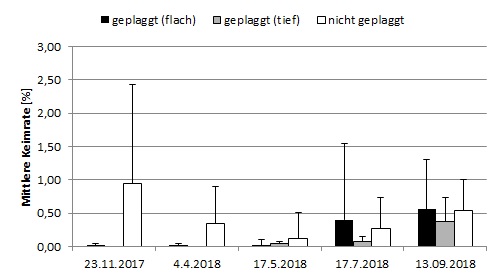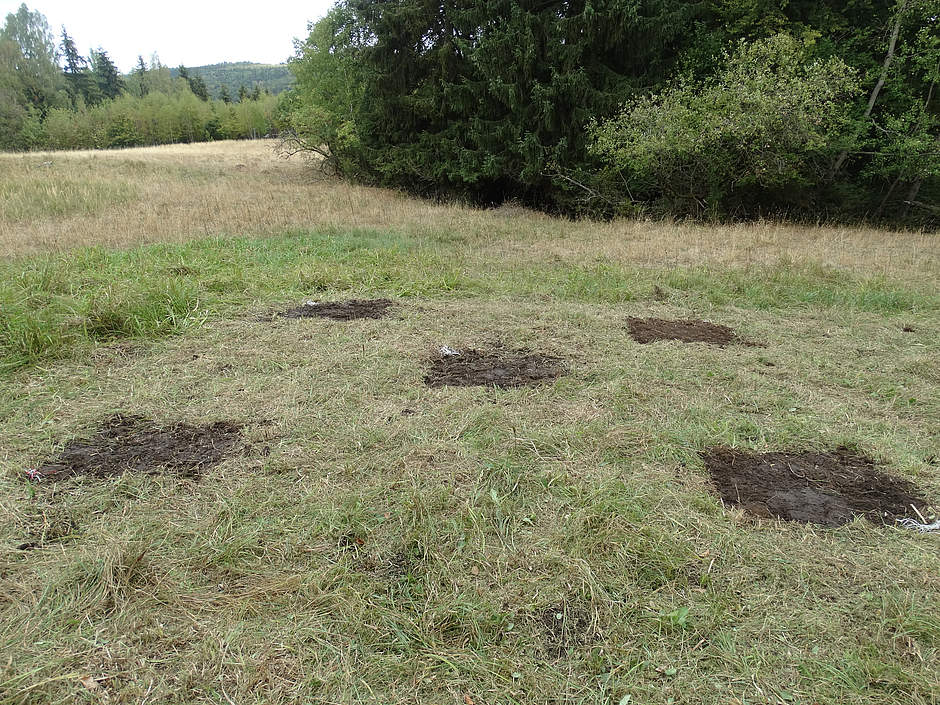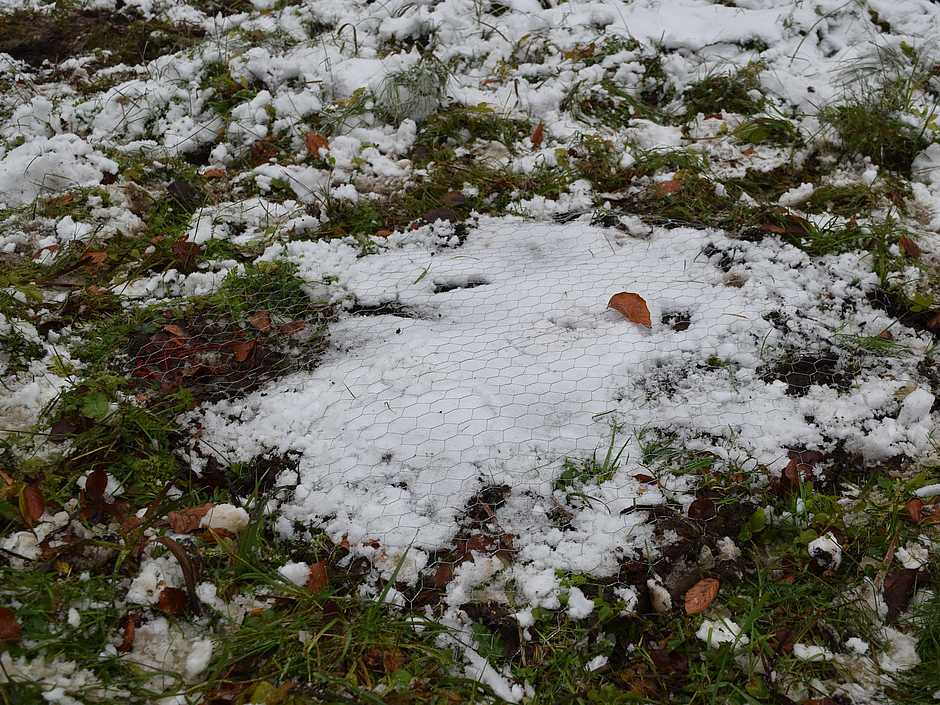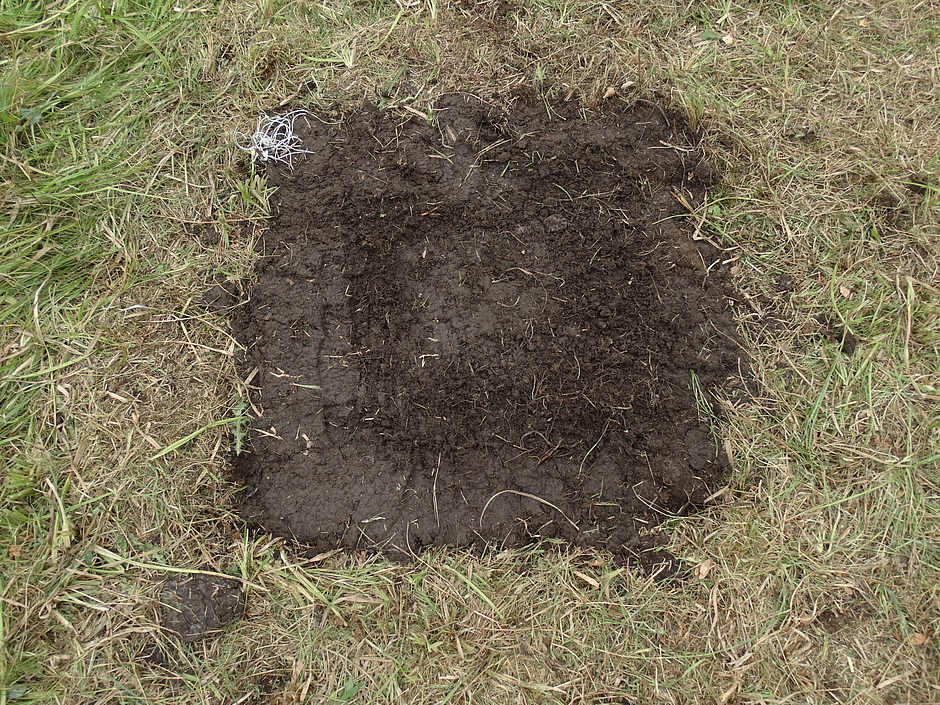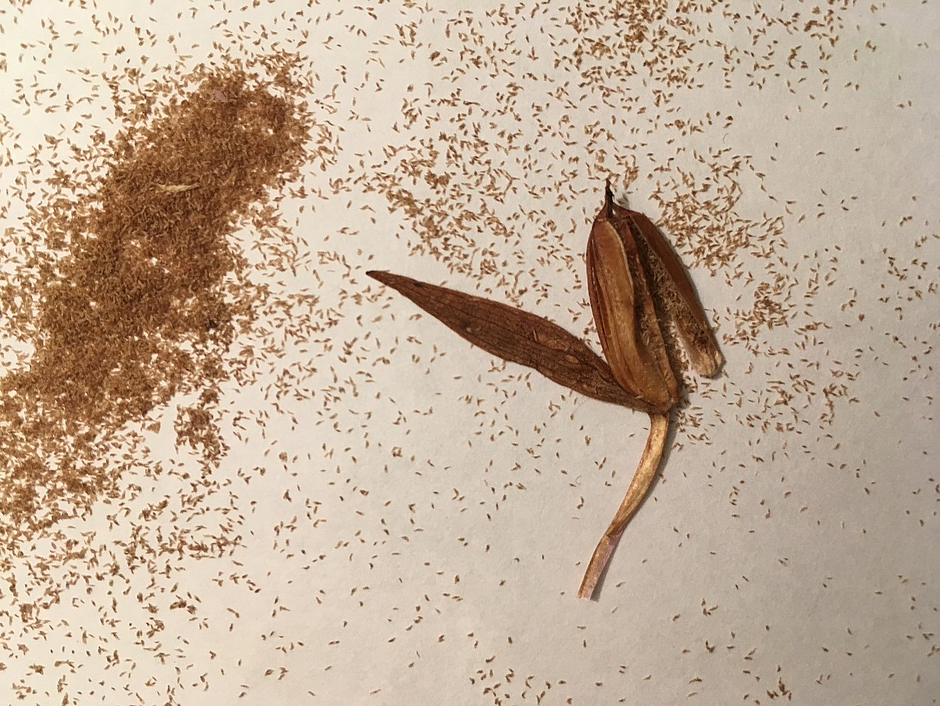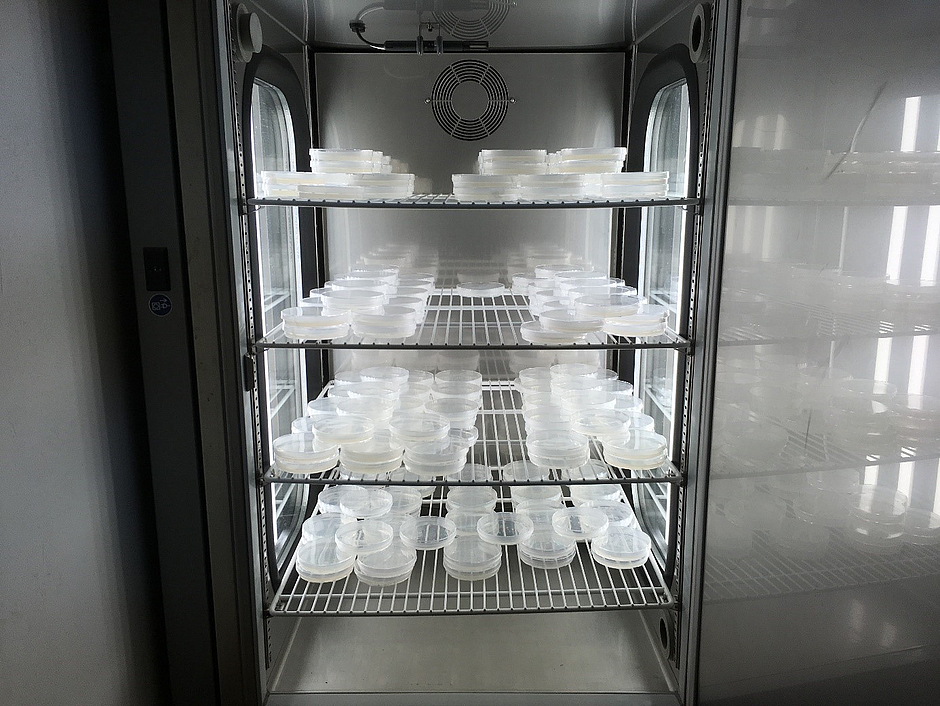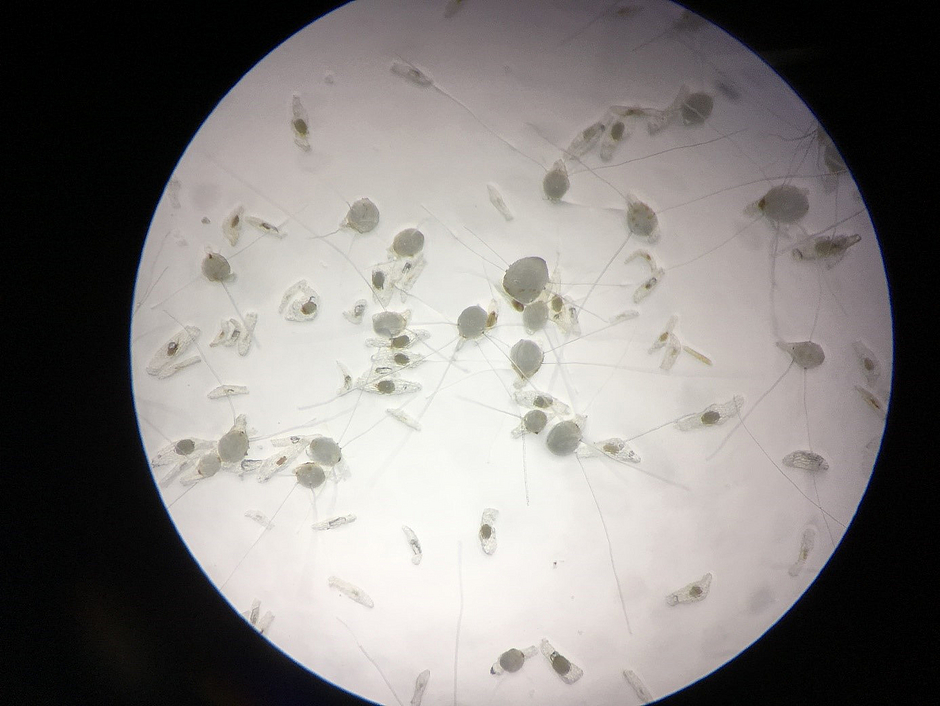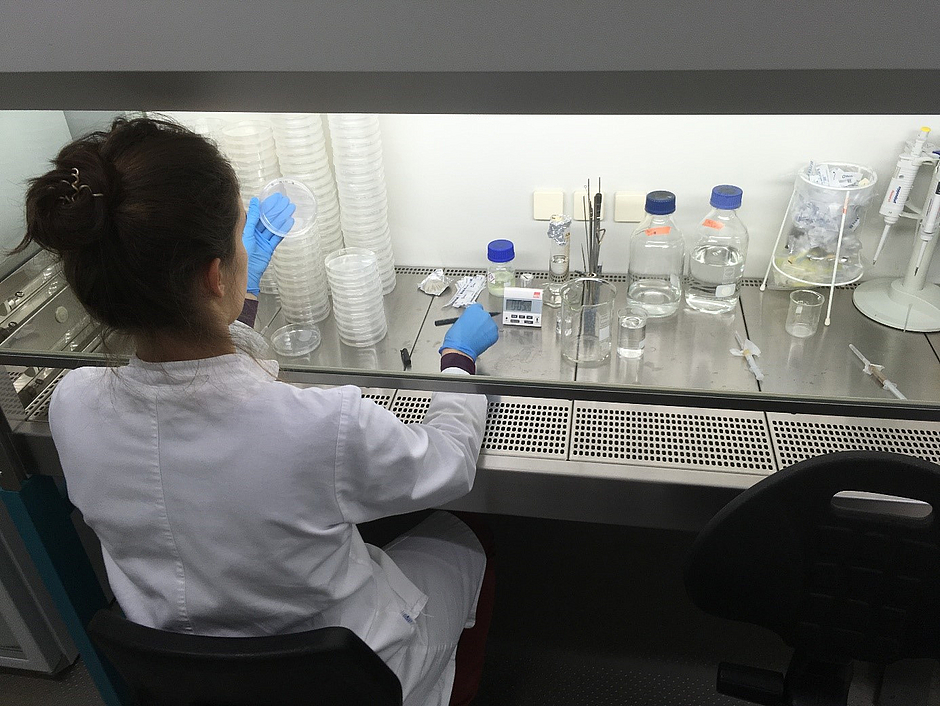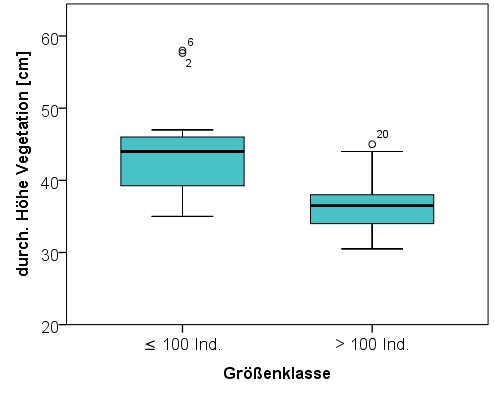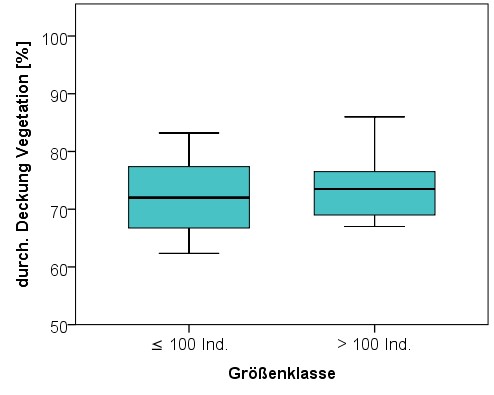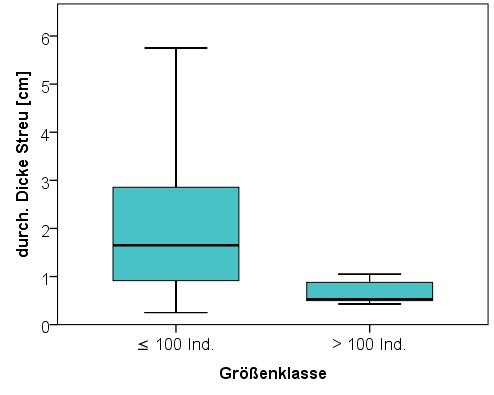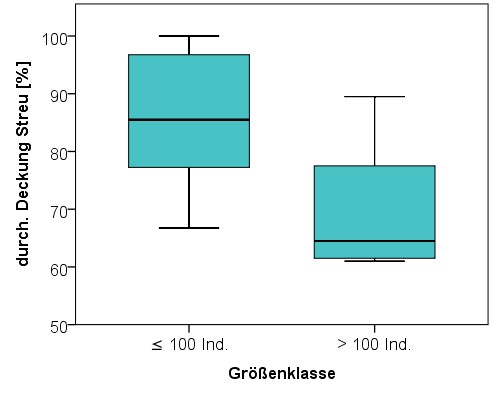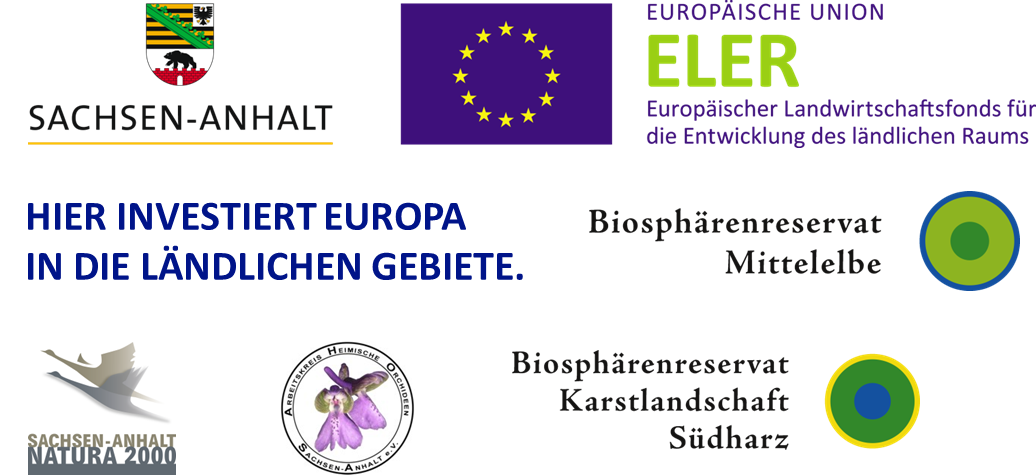Nature-orientated and sustainable grassland management in Saxony-Anhalt to promote the Natura 2000 habitat types 6210(*), 6440 and 6510 as well as Dactylorhiza majalis as a species of national response
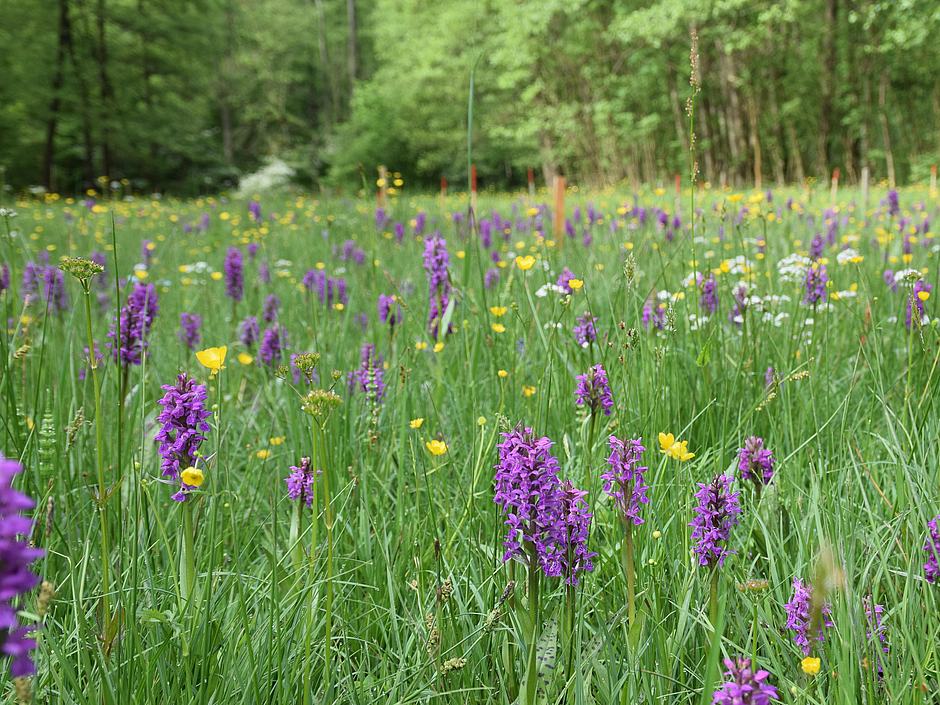
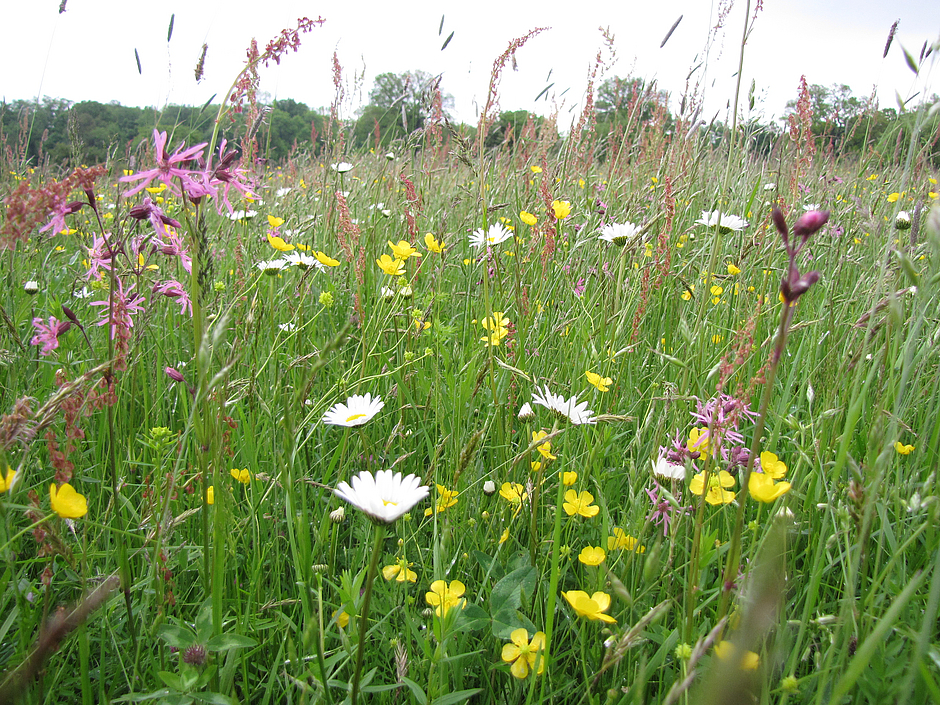
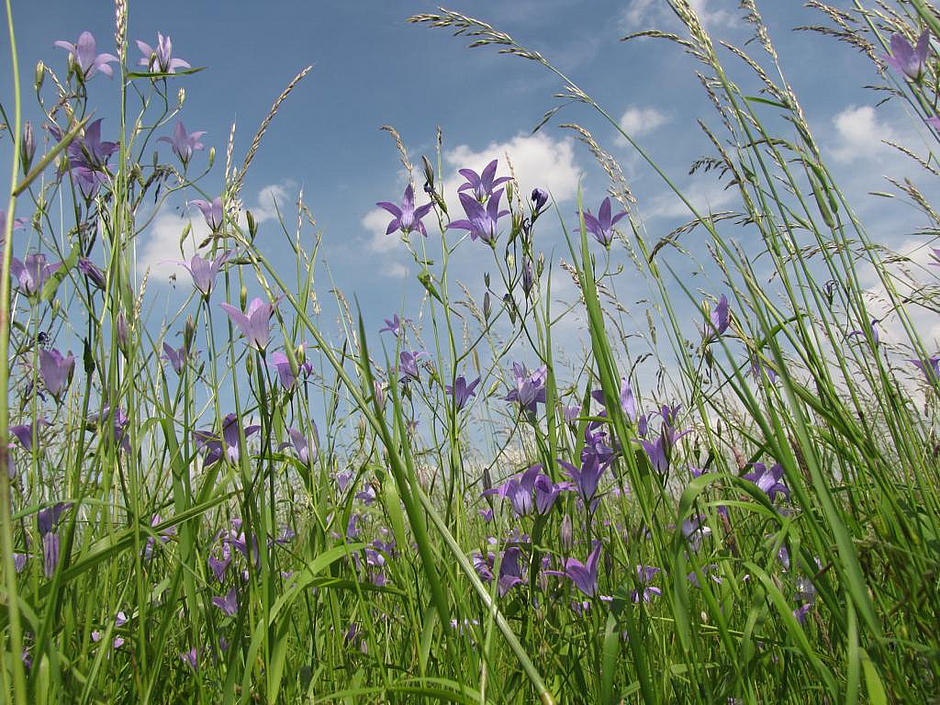
Project targets
Project targets
The project’s results will contribute to a profound scientific basis for the management of FFH-habitats 6210* (semi-natural dry grasslands and scrubland facies on calcareous substrates), 6440 (alluvial meadows of river valleys of the Cnidion dubii) and 6510 (lowland hay meadows) as well as marshes and wetlands. The findings and recommendations are supposed to deliver guidelines for regulations, management- and developmental plans. They can also be used when re-evaluating and adjusting funding guidelines. Furthermore, the actions taken during the project will have a direct positive influence on the responsibility species Dactylorhiza majalis (western marsh orchid).
The project contains the following focus points
- Evaluating the impact of different management factors on the conservation status of grasslands on two example sites of habitats 6510 (sub montane hay meadow in South Harz) and 6440 (floodplain meadow of Elbe floodplain near Dessau).
- Revitalising of moist and wet grasslands with current or historical distribution of Dactylorhiza majalis (West Marsh Orchid)
- Evaluating impacts of different management practices on development and site re-cultivation of Dactylorhiza majalis (West Marsh Orchid)
- Updating and expanding the grassland guideline (FFH habitat 6210), public relations activities and knowledge transfer
Folgende Arbeitsschwerpunkte sind Bestandteil des aktuellen Projekts:
- Untersuchung des Einflusses von Managementfaktoren auf den Erhaltungszustand von Grünlandgesellschaften auf zwei Beispielflächen der LRT 6510 (submontane Frischwiese im Südharz) und 6440 (Auengrünland der Elbaue bei Dessau)
- Revitalisierung von Feucht- und Nasswiesen mit aktuellen oder historischen Vorkommen der Verantwortungsart Dactylorhiza majalis (Breitblättriges Knabenkraut)
- Einfluss von Managementfaktoren auf die Bestandsentwicklung und Wiederansiedlung von Dactylorhiza majalis (Breitblättriges Knabenkraut)
- Aktualisierung und Erweiterung (LRT 6210) des Grünlandleitfadens, Öffentlichkeitsarbeit und Wissenstransfer
Management trial Hayn (Submontane hay meadow – FFH habitat 6510)
Management trial Hayn (Submontane hay meadow – FFH habitat 6510)
Study area description
Altitude: ca. 440 m pH-value: 5,28 (± 0,18)
Annual precipitation: 600 mm Phosphor: 4,63 (± 1,08) (mg/100 g soil)
Annual mean temperature: 6,5 ˚C Potassium: 15,72 (± 3,94) (mg/100 g soil)2017 the FFH-habitat 6510 (lowland hay meadows) was sown at Landesanstalt für Landwirtschaft und Gartenbau in the city of Hayn. The habitat was implemented under sub montane, mesotrophic conditions on shallow ground. The seed mixture used consists of 12 grasses, 27 herbs and 5 legumes. Target species were sown at a density of 1,9g/m². Buckwheat (Fagopyrum esculentum), small-seede false flax (Camelina microcarpa), and garden cress (Lepidium sativum) were sown additionally as a form of cover crop at a density of 2g/m². This ensures quick coverage and promotes germination of target species. The seeds used were exclusively sourced regionally.
Seed bed preparation was done by ploughing, harrowing and levelling. The seed mixture was mixed with ground up corn distributed evenly. The seeds were not worked into the ground but merely rolled. Sowing was done in late June and therefore the optimum for sowing was missed. However, generous rainfall and protection by cover crops ensured successful germination.
Eight weeks after sowing the vegetation was cut at a height of 15-20 cm and again, after 12 weeks, at a height of 10 cm. In the following year vegetation fully covered the ground and provided a rich flowering aspect.

Cutting of the sown vegetation on 20th September 2017 (Photo: S. Dullau). Biomass was gathered and composted elsewhere. 
First cut on 21st August 2017 (Photo: S. Dullau). The quick and high growing plants of the cover crops were harmed during the first cut. The small individuals of the target species were not affected. Biomass was left on the site. 



Juvenile individuals of Achillea millefolium, Centaurea jacea, Leucanthemum vulgare and Knautia arvensis six weeks after sowing (08.08.2017; Photo: S. Dullau)


Flowering aspect one year after sowing. Seen here: Leucanthemum vulgare, Knautia arvensis, Trifolium pratense and Scorzoneroides autumnalis. (30.05.2018, Photo: S. Dullau).
Since 2018 the randomised trial examines different combinations of mowing and fertilizing on productive grassland sites while in use (taking promotions into consideration). With varying amounts of fertilisers (N,P,K) the following ways of management are being tested
- Mowing once a year
- Mowing twice a year
- Mowing three times a year
- Mulching in summer (July)
- Mulching in autumn (October)
- Mulching two times a year

[Translate to English:] Variantenumsetzung Anfang Juni 2018: Mahd (Foto: S. Dullau) 
Implication of management variants June 2018: Mowing (Photo: S. Dullau) 
Implication of management variants at the beginning of June 2018: Mulching (Photo: S. Dullau) Seed mixture used on meadow (FFH-habitat 6510) in Hayn.


Management trial Dessau (Alluvial meadows – FFH habitat 6440)
Management trial Dessau (Alluvial meadows – FFH habitat 6440)
Site description
Altitude: ca. 59 m pH-value: 4,85 (± 0,15)
Annual precipitation: 584 mm Phosphor: 0,93 (± 0,33) (mg/100 g soil)
Mean temperature: 9 ˚C Potassium: 11,27 (± 2,05) (mg/100 g soil)The alluvial meadows called „Fischerhüttenwiesen“ near Dessau are located east of Waldersee and north of the state road to Vockerode and are mainly surrounded by an oxbow called Löbbener See. They are part of the biosphere reserve „Mitelelbe“ and the FFH-area “Dessau-Wörlitzer Elbauen“. The meadows are seasonally flooded grasslands (ca. 67 ha) with characteristic vegetation such as Selinum dubium, Galium boreale, and Sanguisorba officinalis. Parts of the meadows can be characterized as FFH-habitat 6440 since they are equipped with a wide variety of habitat-characteristic and habitat-defining species. The site belongs to the Sanguisorbo officinalis-Silaetum silai Klapp 1951 and is part oft he alluvial plain but is rarely flooded.
Since 2010 the trial tests the impacts of different management methods on species composition, vegetation structure, state of preservation, crop feed value and soil chemistry. Using different types of fertilizer (N,P,K) the following management methods are being tested:
• Mowing twice a year with short interval
• Mowing twice a year with long interval
• Mowing three times a year early on
• Mowing three times a year later on
Allium angulosum, Silaum silaus, Sanguisorba officinalis, Selinum dubium (l.t.r. Photos: H. John). Dactylorhiza majalis (Western Marsh Orchid) in the biosphere reserve “Karstlandschaft Südharz”
Dactylorhiza majalis (Western Marsh Orchid) in the biosphere reserve “Karstlandschaft Südharz”
Situation in the Biosphere Reserve Karstlandschaft Südharz
Situation in the Biosphere Reserve Karstlandschaft Südharz
Through the working group local orchids Saxony-Anhalt e. V. (AHO) were given data on 109 sites with current or historical occurrences of the responsibility type Dacytlorhiza majalis for the area of the Biosphere Reserve Karstlandschaft Südharz. Of these, 81 areas were accessible in spring and early summer 2017.

Historical and currently confirmed occurrences of Dactylorhiza majalis in the Biosphere Reserve Karstlandschaft Südharz. (Points = matt field center point coordinates from the AHO database), map basis: WMS geographic base data MapApps, © Landesamt für Vermessung und Geoinformation Sachsen-Anhalt. (from: DULLAU et al. 2018) 
Distribution of the areas (n = 81) to individual number size classes. (from: DULLAU et al. 2018) Dactylorhiza majalis was confirmed in 43 of the 81 mapped meadows (53%). Almost a third of the areas show only very small occurrences with a maximum of 50 individuals. Only four meadows have orchid populations with more than 500 individuals.
Types of vegetation structure and associated plant species
Types of vegetation structure and associated plant species

Mean number of species of the functional groups in the different types of vegetation structure 
Average coverage of the functional groups in the different types of vegetation structure The meadows with recent occurrences can be divided into six different types with regard to their species composition and vegetation structure:
Moist and wet meadows
(1) with higher coverage of Carex panicea (> 10%)
(2) with higher coverage from Carex nigra (> 20%)
(3) with high coverage of Scirpus sylvaticus (> 30%)
(4) with classic wet meadow species (indifferent mixed group)
(5) dominated by Filipendula ulmaria
(6) dominated by Petasites hybridusPlant species associated with Dactylorhiza majalis within the vegetation structure types (continuity class III = 40-60%, IV = 61-80%) (n = 49)

Vegetationsstruktur einer Feuchtwiese aus dem Wiesentyp Feucht- und Nasswiesen mit niedrigen und mittelhohen Seggenarten mit Ranunculus repens, Carex nigra und Valeriana dioica, sowie Dactylorhiza majalis (16.05.2016, Foto: S. Dullau) 
Vegetationsstruktur eines Kleinseggenrieds aus dem Wiesentyp Feucht- und Nasswiesen (24.05.2017, Foto: S. Dullau) 
Vegetationsstruktur einer durch Scirpus sylvaticus dominierten Feuchtwiese (links) aus dem Wiesentyp Feucht- und Nasswiesen (30.05.2017, Fotos: S. Dullau) 
Vegetationsstruktur einer durch Phalaris arundinaceae dominierten Wiese aus dem Wiesentyp Feucht- und Nasswiesen (26.05.2017, Foto: S. Dullau) 
Vegetationsbestand des Wiesentyps Filipendula ulmaria dominierten Wiese (05.06.2017, Foto: S. Dullau) 
Vegetationsbestand des Wiesentyps Petasites dominierte Wiese (30.05.2017, Foto: S. Dullau) Plant species associated with Dactylorhiza majalis within the vegetation structure types (continuity class III = 40-60%, IV = 61-80%) (n = 49)

Condition and use of the meadows
Condition and use of the meadows

Condition and use of the meadows At 58%, the majority of the areas were in a moderate to poor state of maintenance. Characteristic here were the increased occurrence of species of tall herbaceous vegetation or the dominance of large sedge or forest ledge and denser and higher litter. Woods played a rather subordinate role. The emergence of black alder or raspberry could only be observed in a few areas.
As expected, the mowed areas were mainly in a very good state of maintenance, whereas abandoned areas were only moderate to poor.
Dactylorhiza majalis - cultivation trial "Struthwiese"
Dactylorhiza majalis - cultivation trial "Struthwiese"
Surface characteristics
Height: approx. 422 m above sea level pH value: 4.67 (± 0.12)
Annual precipitation: 500-700 mm1 Phosphorus: 1.27 (± 0.21) (mg / 100 g soil)
Annual temperature: 7-7.8 ˚C1 Potassium: 7.86 (± 1.16) (mg / 100 g soil)Since 2017, the effects of five different cultivation variants on the orchid species Dactylorhiza majalis (broad-leaved orchid) have been tested in the eastern part of the Biosphere Reserve Karstlandschaft Südharz near Wettelrode. The fully randomized plot trial includes the following management variants of different types, intensities and times:
- One year waiver of use
- Mulching
- Single mowing - early mowing (before flowering)
- Single-stage - summer mowing (when the seeds are ripe)
- Two-tier - early mowing / late mowing
1 Information for the southern Harz foreland (LE 4.6) in Reichhoff, L .; Patzak, U .; Lamottke, M .; Reichhoff, K. & G. Warthemann (2001): The landscape structure of Saxony-Anhalt. A contribution to the update of the landscape program of the state of Saxony-Anhalt. - Client: Ministry for Regional Planning, Agriculture and Environment of the State of Saxony-Anhalt & State Office for Environmental Protection Saxony-Anhalt. - Magdeburg / Halle: 331 pp.


Blooming aspect on the Struthwiese (left: May 16, 2016, photo: S. Dullau; right: May 26, 2016, photo: N. Adert)
In addition to the impact of management on an existing deposit, the spontaneous repopulation of open soil sites is also being investigated. For this purpose, at the time of seed ripening of Dactylorhiza majalis, the topsoil and vegetation were completely removed (plagued) within the plots of the cultivation variants on 1 m². It remains to be seen whether the orchid will establish itself in the area of the open ground that has been created. The formation of protocorms has already been demonstrated.



Plague of the 1 m² trial plot in August 2017. Repopulation started after just a few days from the rhizomes remaining in the soil or the diasporic bank (Photos: S. Dullau)
The success control has been carried out annually in May / June since 2017 by taking vegetation photographs. Furthermore, the Dactylorhiza majalis individuals are counted and population-biological characteristics recorded (height of growth, number of leaves, maximum leaf length, length of the inflorescence, number of individual flowers, number of seed heads).
In cooperation with the Jugendwaldheim (JWH) Wildenstall, a meadow ditch was restored in April 2018.


Restoration of the meadow ditches on the Struthwiese with the JWH Wildenstall (April 24, 2018, photos: N. Adert). This prevents excessive swamping of the area and maintains the necessary water-free nature of the orchid growing area.
Dactylorhiza majalis – Trial to actively re-introduce D. majalis at "Rote Wiese"
Dactylorhiza majalis – Trial to actively re-introduce D. majalis at "Rote Wiese"
Site description
Altitude: ca. 379 m NN pH-value: 4,69 (± 0,46)
Annual precipitation: 500-700 mm1 Phosphor: 0,72 (± 0,7) (mg/100 g soil)
Mean temperature: 7-7,9 ˚C1 Potassium: 10,18 (± 4,48) (mg/100 g soil)On a second site in the eastern part of the biosphere reserve (“Rote Wiese”) a trial was set up to gather information about actively re-introducing the Western Marsh Orchid (Dactylorhiza majalis). Main point of interest are the specific conditions under which it is possible to actively re-introduce D. majalis via sowing. Management of the site was not changed (cutting once a year in July and removing the hay). Since a small population of Dactylorhiza majalis can be found on the site already the site seems fit to host the species.
The re-introduction trial consists of six different variants including two creating open soil spots:
- Removing topsoil (shallow)
- Removing topsoil (deep)
- Removing topsoil (shallow) + sowing
- Removing topsoil (deep) + sowing
- Sowing only
- Control
It is further investigated whether the seeds of Dactylorhiza majalis will germinate at all on the disturbed parcels. The method used is similar to the one suggested by Rasmussen & Whigham (1993)2. 700 seeds are placed in a small bag made of plankton and secured in a frame which is then buried (a total of 10 frames are inserted into the soil per variant). Two frames are removed at a time and microscopically examined.
1 Information about the southern Harz foreland (LE 4.6) in: Reichhoff, L .; Patzak, U .; Lamottke, M .; Reichhoff, K. & G. Warthemann (2001): The landscape structure of Saxony-Anhalt. A contribution to the update of the landscape program of the state of Saxony-Anhalt. - Client: Ministry for Regional Planning, Agriculture and Environment of the State of Saxony-Anhalt & State Office for Environmental Protection Saxony-Anhalt. - Magdeburg / Halle: 331 pp.
2 Rasmussen, H.N. & D.F. Whigham (1993): Seed ecology of dust seeds in situ: A new study technique and its application in terrestrial orchids. American Journal of Botany 80 (12): 1374-1378.



Ten frames prepared with plankton bags and 700 seeds in them were put into the soil. At different times, two of them were extracted and searched for protocorms.


On sites on which no topsoil was removed protocorms were already found a few weeks after insertion of the frames. On the sites which had their topsoil removed protocorms only formed during the next vegetation period.
Since 2018 yearly relevés ensure a close monitoring of the vegetation development on the trial site. Dactylorhiza majalis individuals are counted each year and vitality characterisitcs are recorded (such as height, number of leaves, maximum leaf length, length of inflorescence number of individual flowers, number of seed stems).
Dactylorhiza majalis – Re-introduction and strengthening of the population
Dactylorhiza majalis – Re-introduction and strengthening of the population
Actions taken to re-introduce and strengthen Dactylorhiz majalis at the biosphere reserve “Karstlandschaft Südharz”
Five 1x1m sowing plots were established on each of ten meadows with vanished or very small populations of Dactylorhiza majalis in 2018. The topsoil was turned over and 10.000 seeds per plot were sown. To ensure optimal growing conditions some meadows were restored (i.e. low cutting and removing the hay, restoration of proper drainage). To protect the plots from wild boar they were covered with wire mesh. Germination trials are also done on these plots.



Newly implemented plot with turned-over topsoil (left) (28.08.2018, photo: S. Dullau) and wire mesh to protect plots from wild boar (right) (22.11.2018, photo: N. Adert).
Dactylorhiza majalis – Germination trials
Dactylorhiza majalis – Germination trials

Seeds of Dactylorhiza majalis (photo: H. Hensen) 
Storing seeds for 42 days in the germinator (photo: H. Hensen) 
Germinated seeds (photo: H. Hensen) 
Counting of germinated seeds (photo: H. Hensen) To further investigate on some questions regarding the responsibility species „Dactylorhiza majalis“ at the biosphere reserve „Karstlandschaft Südharz“ in Saxony-Anhalt germination trials were executed. The main point of focus was to determine whether germination rates can be used as a vitality parameter. Seeds of different populations were sterilised and put on an, afore tested, growth medium without their mycorrhiza. The seeds were put into a germinator for 42 days and then counted under a binocular, spereating germinated and un-germinated seeds.
Dactylorhiza majalis – vitality tests
Dactylorhiza majalis – vitality tests
In 2018 vitality parameters were investigated. On each of 20 population sites 20 randomly selected individuals were tested on the following parameters: height, inflorescence length, number of flowers and leaves, maximum leave area and number of filled seed capsules. It was the further investigated, whether these parameters are in any correlation with population size. Other possible factors influencing population size were also counted in.
Because of small sample size populations were classified into two categories: populations with ≤100 individuals and populations with >100 individuals. Populations with >100 individuals. inflorescences were significantly longer than in populations with ≤100 individuals. On the other hand, in populations ≤100 individuals, more filled seed capsules were found and the flower to seed capsule ration was also slightly significantly higher. No direct correlation between population size and plant vitality could be found.
It was furthermore evaluated, if there were differences concerning biotic factors between the population size classes. It was found that sites with smaller population sizes had worse growing conditions: they showed significantly bigger general vegetation height as well as thicker levels of litter.




Distribution of the means of the biotic factors within the population size classes. Verteilung der Mittelwerte der biotischen Standortparameter innerhalb der zwei Größenklassen (from: KLINGMANN 2019)1
1 Klingmann, L. (2019): Vitalität von Dactylorhiza majalis (RCHB.) P.F. HUNT ET SUMMERH. in unterschiedlich großen Populationen des Südharzes. Master thesis. Hochschule Anhalt, Bernburg. 60 p. –Unpublished
project leader: Prof. Dr. habil. Sabine Tischew
researcher: Dipl.-Ing. (FH) Sandra Dullau, Nele Adert (M. Sc.), Maren Helen Meyer (B. Sc.), Dipl.-Biol. Frank Richter, Heiner Hensen (M. Sc.)
project duration: 02/2017 - 09/2019 (FKZ: 407.1.2-60128/630116000012)
funding: Europa-ELER, ELER-Sachsen-Anhalt, Landesverwaltungsamt Sachsen-Anhalt
cooperation partner: Landesanstalt für Landwirtschaft und Gartenbau Sachsen-Anhalt, Biosphärenreservat Mittelelbe, Biosphärenreservat Karstlandschaft Südharz, Arbeitskreis heimische Orchideen (AHO) Sachsen-Anhalt e. V., Förderverein für das Biosphärenreservat Karstlandschaft Südharz "Zukunft im Südharz" e. V., Landesforstbetrieb, Landwirtschaftsgesellschaft Dessau-Mildensee mbH




